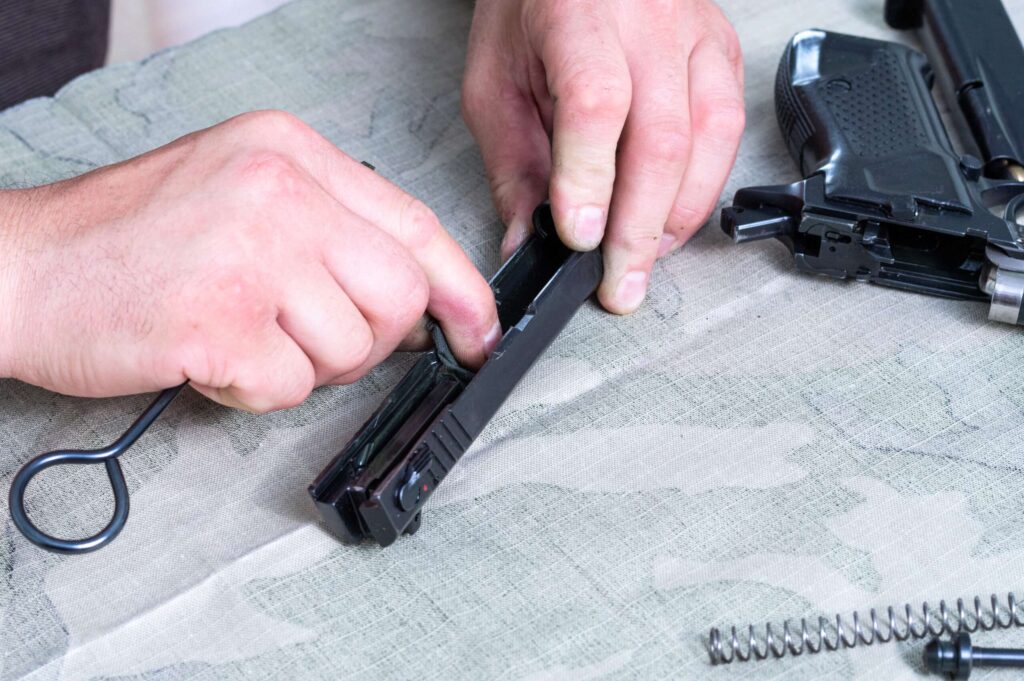When looking for affordable gun accessories, understanding the role of various components in a firearm is crucial. One key part of a gun’s structure is the receiver housing. This component plays several vital roles in the firearm’s functionality and safety. Exploring its functions can provide a deeper appreciation for how guns are designed and how they operate.
Understanding the Receiver Housing
The receiver housing is a central component of a firearm. It serves as the main body that houses and supports other critical parts of the gun. The receiver housing can be thought of as the “heart” of the firearm, providing the necessary support for the operational mechanisms.
Main Functions of the Receiver Housing
- Housing the Trigger Mechanism
- The receiver housing contains the trigger mechanism, which controls the firing process. This mechanism includes parts like the trigger, hammer, and sear. The receiver housing provides the structure needed for these components to function together smoothly.
- Supporting the Barrel
- The receiver housing attaches to the barrel of the firearm. It helps align the barrel correctly, ensuring that the gun fires accurately. Proper alignment is essential for maintaining shooting precision and consistency.
- Containing the Bolt Assembly
- In many firearms, especially rifles, the receiver housing holds the bolt assembly. The bolt assembly includes the bolt and bolt carrier, which move to chamber the round and eject spent casings. The receiver housing provides the track and support for these parts.
- Providing a Platform for the Magazine
- The receiver housing often includes a section for the magazine. This part holds the ammunition and feeds it into the chamber. The design of the receiver housing ensures that the magazine functions correctly and reliably.
- Ensuring Proper Functioning of the Safety Mechanism
- Safety mechanisms are crucial for preventing accidental discharges. The receiver housing integrates the safety features that allow the shooter to control whether the gun is in a safe or fire mode. This integration is vital for the overall safety of the firearm.
Detailed Look at Receiver Housing Components
Components and Their Roles
- Upper Receiver
- The upper receiver is part of the firearm that typically houses the bolt and charging handle. It often connects to the barrel and may include the sights. Its main role is to support the bolt assembly and ensure smooth cycling of the action.
- Lower Receiver
- The lower receiver contains the trigger assembly and magazine well. It connects to the stock and grip, providing the shooter with control over the firearm. This part is crucial for handling and operating the gun effectively.
- Receiver Extensions
- Some firearms have extensions or additional parts attached to the receiver housing, such as rails for mounting scopes or other accessories. These extensions provide additional functionality and customization options.
Importance of Receiver Housing in Gun Maintenance
Proper maintenance of the receiver housing is essential for ensuring reliable performance and longevity of the firearm. Here’s why:
Cleaning and Lubrication
- Regular Cleaning: Dirt and debris can accumulate in the receiver housing, affecting the firearm’s function. Regular cleaning helps prevent malfunctions and ensures smooth operation.
- Proper Lubrication: Lubricating the moving parts within the receiver housing reduces friction and wear, extending the lifespan of the components.
Inspection for Wear and Damage
- Checking for Cracks: Inspect the receiver housing for any signs of cracks or damage. A compromised receiver can affect the firearm’s safety and reliability.
- Ensuring Proper Fit: Make sure all parts fit correctly within the receiver housing. Loose or misaligned components can lead to malfunctions.
Customization and Upgrades
The receiver housing can be customized or upgraded to suit specific needs. Some common modifications include:
Adding Accessories
- Mounting Rails: Rails can be added to the receiver housing to mount scopes, lights, or other accessories.
- Custom Grips: Upgrading the grip or stock attached to the receiver can improve handling and comfort.
Upgrading Components
- Enhanced Triggers: Installing a high-performance trigger assembly can improve shooting accuracy and response.
- Improved Safety Mechanisms: Upgrading safety features can enhance overall firearm safety and reliability.
Conclusion
The receiver housing plays a critical role in the function and performance of a firearm. From housing the trigger mechanism to supporting the barrel and magazine, its design impacts many aspects of gun operation. Understanding its functions helps in maintaining the firearm and making informed decisions about modifications and accessories. Proper care and attention to the receiver housing ensure a reliable and accurate shooting experience, reflecting the importance of this central component in firearm design.
Stay tuned for more news and updates on Infinite Insight Hub!



